Jung 3360-1 Handleiding
Jung
Bewegingsdetector
3360-1
Bekijk gratis de handleiding van Jung 3360-1 (11 pagina’s), behorend tot de categorie Bewegingsdetector. Deze gids werd als nuttig beoordeeld door 17 mensen en kreeg gemiddeld 4.9 sterren uit 9 reviews. Heb je een vraag over Jung 3360-1 of wil je andere gebruikers van dit product iets vragen? Stel een vraag
Pagina 1/11

KNX Presence detector
Standard/Universal
Ref.-no.: 3360, 3360-1
Operating Instructions
KNX Presence detector Standard/
Universal
Inhaltsverzeichnis
1. System information........................................................................... 1
2. Safety warnings................................................................................. 2
3. Presence detector principles ........................................................... 2
4. Function of presence detector ‘Standard’...................................... 2
5. Fitting.................................................................................................. 4
6. Adjustment......................................................................................... 5
7. Field of detection............................................................................... 8
8. Snap-on mask.................................................................................... 9
9. Technical data ................................................................................. 10
10. Acceptance of guarantee................................................................ 11
1. System information
This unit is a product of the instabus- EIB-System and corresponds to the
EIBA Guidelines. Detailed technical knowledge acquired in instabus
training courses is a prerequisite for the understanding of the system.
The functions of the device are softwaredependent. Detailed information
on the software and the functions implemented and the software itself are
available from the manufacturer’s product data bank.
Planning, installation and commissioning of the device are effected with
the help of EIBA-certified software. For the productdatabase and
technical descriptions please refer to the internet at www.jung.de oering
up-to-date information.
Stand: Jan-08 825 403 03

KNX Presence detector
Standard/Universal
Ref.-no.: 3360, 3360-1
2. Safety warnings
Attention: Electrical equipment must be installed and fitted by
qualified electricians only.
Non-observance of the installation instructions may damage the
device and cause re or other hazards.
3. Presence detector principles
A presence detector belongs to the group of passive infra-red detectors
(PIR) exactly like movement detectors or detectors for alarm
These devices can be distinguished by their internal structure, signal
detection and signal evaluation which make them suitable for dierent
applications:
• After detecting movements, a movement detector switches the light
on dependent on brightness and off in dependent of brightness when
no movements are detected anymore.
• A movement detector for alarm systems signals a movement (pulse)
to a central alarm station independent of brightness. The number of
pulses transmitted within a time slot can often be freely selected. The
field of detection is limited to narrower angles (90° and in most cases
even less).
• A presence detector is designed to switch on the light dependent on
brightness when movements are detected and to switch it off when it
is no longer needed. This is the case if it is bright enough without
artificial lighting or when no one is present anymore. This means that
the ‘presence’ of a person is detected depending on a preset
brightness level.
These PIR detectors differ mainly in the design of the Fresnel lense
installed, their adjustment with regard to ambient conditions, the type of
fitting and the properties of the movement or brightness signal.
A presence detector is exclusively installed under the ceiling of a room
and monitors the room surface below. It works with a passive infra-red
sensor (PIR) and responds to thermal movements triggered by persons,
animals or objects.
4. Function of presence detector ‘Standard’
Function presence Standard
The presence detector ‘Standard’ is used for the detection of presence
(presence detector mode) and for the detection of movements (ceiling
detector mode) in rooms.
Both modes of operation oer 2 independently programmable output
channels.
The respective mode of operation (ceiling detector or presence detector)
is programmed for the presence detector ‘Standard’ model with the ETS
software.
Subsequent switching between the operating modes is not possible. A
change of the mode of operation requires reprogramming of the device.
L The presence detector ‘Standard’ can only be used as a stand-alone
unit. It is not possible to use several presence detectors ‘Standard’ in
2

KNX Presence detector
Standard/Universal
Ref.-no.: 3360, 3360-1
the same room to enlarge the detection range. The detectors would
interfere with one another.
Function of presence detector ‘Universal’
The instabus presence detector ‘Universal’ can be operated in three
different modes::
• ceiling detector mode
• presence detector mode
• signalling mode
The modes are selected when the device is programmmed with the ETS
software. The device can be programmed so that only one mode is active
(mono operation) or that the device can be switched between two preset
modes via the instabus EIB (alternative operation, e.g day-time presence
mode and night-time signalling mode).
Both modes of operation offer two output channels with independent
parameter programming.
Depending on the type of application, the presence detector
‘Universal’ can be used as individual unit, main unit or
extension unit. The operation as main unit and as extension
unit permits enlarging the zone of detection. The presence
detector ‘Universal’ can also be used in combination with
flushmounted automatic switches from JUNG in a master-slave
configuration. For brightness-independent activation it is also
possible to use a touch sensor as extension unit.
Description of the modes of operation with predefined parameters
Ceiling detector moder
In the ceiling detector mode, the device detects movements and
transmits the programmed telegram representing the beginning of
detection, when the measured brightness is below the preset brightness
value. The device is now operational independent of brightness. If no
further movements are detected, the device transmits the programmed
telegram representing the end of detection when the preset overall
transmit delay has elapsed.
Presence detector mode
In the presence detector mode, the device detects the presence of a
person and transmits the programmed telegram representing the
beginning of detection, when the measured brightness is below the
preset brightness value.
If no presence is detected anymore and if the preset overall transmit
delay has elapsed or if the preset brightness value has been exceeded
for at least 10 minutes by the double, the presence detector transmits the
programmed telegram representing the end of detection.
The functional difference with regard to the ceiling detector mode lies...
a) in the processing of the movement signal Contrary to the ceiling
detector mode, a presence is detected only after several successive
movement pulses have been received.
b) in the processing of the brightness signal The presettable brightness
range to be monitored for the brightness threshold value is larger than in
3
Product specificaties
| Merk: | Jung |
| Categorie: | Bewegingsdetector |
| Model: | 3360-1 |
Heb je hulp nodig?
Als je hulp nodig hebt met Jung 3360-1 stel dan hieronder een vraag en andere gebruikers zullen je antwoorden
Handleiding Bewegingsdetector Jung

15 Mei 2025
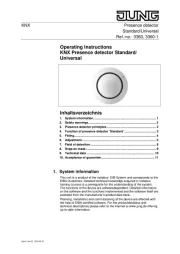
15 Mei 2025
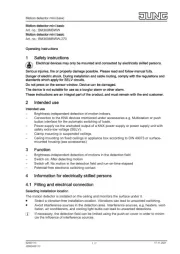
15 Mei 2025

23 Augustus 2024

23 Augustus 2024

23 Augustus 2024

23 Augustus 2024

23 Augustus 2024

23 Augustus 2024

23 Augustus 2024
Handleiding Bewegingsdetector
- Wentronic
- Hager
- Berker
- Crestron
- Maxsa
- Yale
- Blaupunkt
- Speed-Link
- Satel
- Gira
- Lucide
- Nedis
- IFM
- Niko
- EtiamPro
Nieuwste handleidingen voor Bewegingsdetector

9 September 2025

8 September 2025
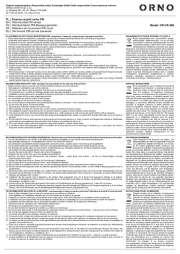
11 Augustus 2025
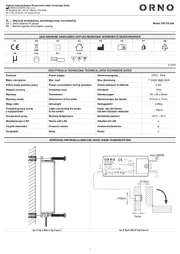
11 Augustus 2025
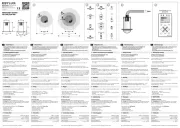
6 Juli 2025
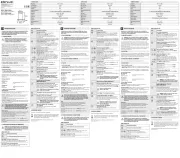
6 Juli 2025
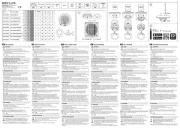
5 Juli 2025

5 Juli 2025
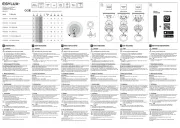
5 Juli 2025
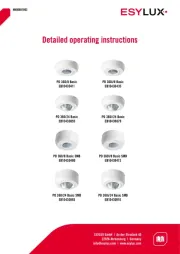
5 Juli 2025